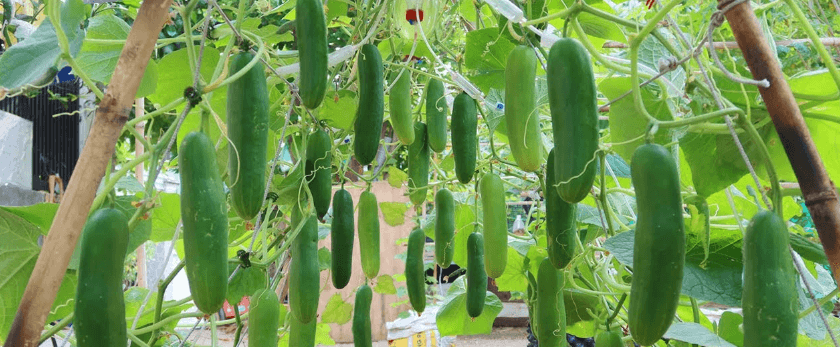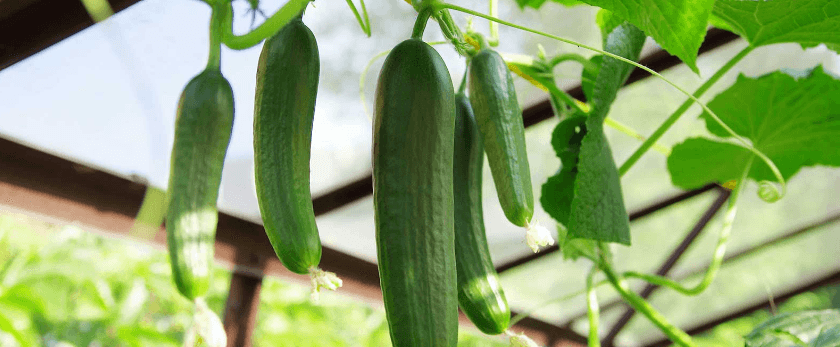Cucumbers are a popular and versatile vegetable that can be grown in a variety of climates and conditions. Not only are they delicious and refreshing, but they also offer numerous health benefits, such as being a good source of vitamins and minerals. However, like any plant, cucumbers require proper care and attention to thrive. In this article, we will discuss how to grow cucumbers in an eco-friendly and sustainable manner, from choosing the right variety to harvesting and responsible disposal methods.
Choosing the Right Variety
Before you start growing cucumbers, it's important to choose the right variety for your climate and growing conditions. There are two main types of cucumbers: slicing and pickling. Slicing cucumbers are larger and have a thicker skin, making them ideal for salads and sandwiches. Pickling cucumbers are smaller and have a thinner skin, making them perfect for pickling and preserving.
When selecting a variety, consider the length of your growing season, as some cucumbers take longer to mature than others. You should also consider the space you have available, as some varieties are more compact and suitable for container gardening. Some popular varieties of cucumbers include 'Marketmore 76', 'Lemon', 'Straight Eight', and 'Boston Pickling'.
How to Care for Cucumbers
Watering
Cucumbers require consistent and adequate watering to thrive. They have shallow roots, so it's important to water them deeply and regularly to ensure the soil stays moist. However, be careful not to overwater, as this can lead to root rot and other diseases.
The best way to water cucumbers is to use a drip irrigation system or a soaker hose. This will ensure that the water reaches the roots without wetting the leaves, which can lead to fungal diseases. Water your cucumbers in the morning to allow the leaves to dry out during the day, reducing the risk of disease.
Light
Cucumbers are sun-loving plants and require at least 6-8 hours of direct sunlight per day. If you're growing them in a container, make sure to place them in a sunny spot or use a grow light to supplement natural light. Lack of sunlight can result in stunted growth and poor fruit production.
Soil
Cucumbers prefer well-draining, fertile soil with a pH level between 6.0-7.0. Before planting, amend your soil with compost or well-rotted manure to provide the necessary nutrients for healthy growth. You can also add a layer of mulch around the base of the plants to retain moisture and suppress weeds.
Fertilizer
Cucumbers are heavy feeders and require regular fertilization to produce a bountiful harvest. You can use organic fertilizers, such as compost or fish emulsion, to provide a slow release of nutrients. Alternatively, you can use a balanced fertilizer, such as 10-10-10, every 3-4 weeks during the growing season.
Pruning
Pruning is not necessary for cucumber plants, but it can help improve air circulation and reduce the risk of disease. You can remove any damaged or diseased leaves and prune the vines to control their growth and prevent them from taking over your garden.

What is the Best Time to Grow Cucumbers?
Cucumbers are warm-weather plants and should be planted after the last frost date in your area. They require a minimum soil temperature of 60°F (15°C) to germinate, so it's best to wait until the soil has warmed up before planting. In most regions, this is around mid to late spring.
If you live in a colder climate, you can start your cucumbers indoors 3-4 weeks before the last frost date and transplant them outside once the soil has warmed up. This will give your plants a head start and allow you to enjoy fresh cucumbers earlier in the season.
Common Problems with Cucumbers
Cucumbers are relatively easy to grow, but they can face some common problems that can affect their growth and yield. Here are some of the most common issues and how to prevent or treat them:
- Pests: Cucumbers can be susceptible to pests such as aphids, cucumber beetles, and squash bugs. To prevent these pests, use row covers or plant companion plants, such as marigolds, to repel them. If you notice any pests, you can handpick them or use organic insecticidal soap to control their population.
- Diseases: Cucumbers can also be affected by fungal diseases, such as powdery mildew and downy mildew. To prevent these diseases, make sure to provide adequate air circulation and avoid wetting the leaves when watering. You can also use organic fungicides, such as neem oil, to treat these diseases.
- Poor pollination: Cucumbers require pollination to produce fruit, and if there are not enough pollinators in your area, you may end up with misshapen or underdeveloped cucumbers. To ensure proper pollination, you can hand-pollinate your plants by transferring pollen from male flowers to female flowers using a small brush or cotton swab.
Responsible Disposal Methods
Once you have harvested your cucumbers, it's important to dispose of any leftover plant material in a responsible manner. You can compost the leaves and stems, which will provide valuable nutrients for your garden. If you don't have a compost bin, you can also chop up the plant material and use it as mulch in your garden.
If you have any leftover cucumbers that you can't eat or preserve, don't throw them away. Instead, consider donating them to a local food bank or sharing them with your friends and neighbors. This will not only reduce food waste but also promote a sense of community and connection.
Conclusion
Growing cucumbers is a rewarding and enjoyable experience, and by following these tips, you can do it in an eco-friendly and sustainable way. Remember to choose the right variety, provide proper care, and be mindful of responsible disposal methods. By doing so, you can enjoy fresh and delicious cucumbers while also contributing to a greener and more sustainable future. Happy gardening!










